About the author
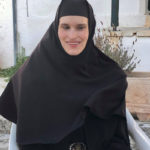
Sister Sidonia Freedman
Sr. Sidonia Freedman is a nun at the Sacred Monastery of St. Nina (Georgian Patriarchate) in the United States, with musicology and medieval studies degrees from St. Olaf College (undergraduate), and the University of Limerick (MA, PhD) where her focus turned towards Orthodox theology with a focus on Georgian polyphonic chant. Despite blindness in both eyes, Sister Sidonia is a highly accomplished lecturer, singer, choir director, and scholar, with numerous publications to her credit (see selected works at academia.edu).
Part II: Musical Analysis of the Georgian Trisagion Hymn
Part I: Chanting Around the Throne of God (Theological and Ritual Perspectives)
Part III: Trisagian Hymn – East Syrian and Georgian Connections
The non-linguistic content of chant has become an important aspect of recent research of the Trisagion and related hymns. For instance, in the church of Hagia Sophia in the late Middle Ages, melodic motives and non-semantic syllables had important symbolic values, such as angelic song and the descent of the Holy Spirit (Steenberge). Interestingly, sound could also be misused or ill-imagined, expressing unorthodox ideas, as described by St. Athanasius.
Musical expression is not adjunct to text but has its own iconography and symbolism, interacts with text in various ways, and, though not always consciously employed (for example, direct quotation as in late Byzantine cherubika), indicates how text is understood and interpreted. This aspect includes how it is considered to be structured, what its context is, how its repetition is construed, what all non-lexical aspects signify, and therefore, how the same ought to be employed. Like their inscribed counterparts, musical forms of the Trisagion can shed light on the history as well as the meaning of its sounds.
While this article primarily concerns the Trisagion, in part because of its wider use in practice, we also touch upon the cherubikon and entrance hymns. Let us begin by exploring the musical material in Georgian Trisagia specified for use in funerals and memorials, after a brief note on the general theological interpretation of Georgian polyphony.
Many readers may be aware of the symbolism of harmonic structure and counterpoint in Georgian polyphony, in which the three voices are likened to the three Persons of the Trinity, as described by the twelfth-century theologian Ioane Pet’rits’i in the Prologue to the Psalter, (translated in Gigineishvili, 2014). I have discussed this topic in other work, most recently in the Journal of the International Society for Orthodox Church Music, and also here.
While we cannot discuss all characteristics of each chant, or all aspects of their possible significance, we will explore those that are the most salient: structure, cadence and phrase type, ornamentation, and motive. Structure and motive are attributes that will then connect to further examples.
The various schools of Georgian chant all of have different variants for the funerary trisagion, but they share the same basic structure. Svetitskhoveli, Gelati, and Svaneti school variants all follow an AbAbAb(′)C pattern, setting each repetition of “holy” in the same way, each addition from Psalm 41 according to another shared motive, and the final supplication with a closing phrase. This structure is most clearly heard in the Gelati monastery variant of this chant (recording posted below).
Recording by the Anchiskhati Church Choir (Gelati monastery variant)
Georgian Text:
Ts’mindao ghmerto (holy God)
Ts’mindao dzliero (holy Almighty)
Ts’mindao uk’vdao (holy Immortal)
Shegvits’qalen chven (have mercy on us).
Cadences occur after each structural element, forming seven complete phrases. The first six phrases are paired, rendering an overall four-part form. This structure follows the cruciform shape, which fits the order of the processional cross above, three symmetrical arms and a grounding base. It also responds to the Arian view of imagined angelic chant with a sound that instead signifies equality across each repetition of “ts’mindao” (at the beginning, at 0:27, and at 0:53, in the first of three iterations of the entire hymn).
This repetition occurs again, using a new musical idea that nevertheless begins with the same two notes in the top voice, on the words “ghmerto,” “dzliero,” and “uk’vdavo” (at 0:15, 0:41, and 1:07), despite the differing number of syllables in “ghmerto.” While the structure is not as square in the other two variants, the same theological meaning is amplified by other musical characteristics which bring related ideas into relief and adorn the cruciform shape.
The cadential patterns differ among the three examples, emphasizing other theological points. In the Gelati variant, there is a sense of question and answer, each “holy” ending with an unresolved harmony but a resting note in the top voice (e.g. at 0:11), and each companion word leading to a unison cadence (e.g. at 0:46), almost like the final gesture but on a different pitch. Each invocation is therefore punctuated as a complete sentence, either a question or a statement. This structure reflects the earliest sense of the Trisagion and its Jewish predecessors, as an interpretation of the thrice-holy, responding to the questions “what?” and “why holy?” (Beck 2011).
By contrast, the Svaneti school variant does not separate each “holy” and its attribute into phrases with as much distinction, since there is less harmonic progression around “holy,” which is part of each of the three longer statements (start relevant phrase at 1:24).
The half-cadence of a fourth at the end of each repetition of “holy” (e.g. at 1:41) is emphasized by the harmonic progression that follows it and leads to a fifth at the end of the b phrase (e.g. at 1:47). In some performances, such as in the Lakhushdi Village variant, the fifth elides into call gestures after each brief unison, on the extended vocable syllable “ha,” joining each phrase to the next (e.g. at beginning at 0:17).
A similar continuity takes place between iterations of the entire hymn (e.g. beginning at 1:04), where the second voice continues the word “chven” with a descending note that leads into the next repetition. The final unison occurs to mark the end of the required three repetitions. The occurrence of a true final cadence only at this point highlights the theological reason for three repetitions of a hymn that already contains the thrice-holy. St. John of Damascus writes that in this case, three does not refer to the Trinity but stands for perfect, unceasing praise (Olkinuora 2018).
The Svetitskhoveli variant has the strongest sense of completion at cadences of a fifth (e.g. at 0:20).
Recording by the Anchiskhati Church Choir (Svetitskhoveli monastery variant)
Each “holy” stands as a complete statement, while each name ends with a third (e.g. at 0:40), making way for the following phrase. The pattern differs, however, at the third reprise, where “uk’vdavo” has a shortened motive (1:54), joining it with the final supplication (2:04). Thus, “immortal, have mercy on us” is rendered without interruption or expected punctuation. While this treatment breaks the strict structure, it follows our other inscribed example, placing the last two elements onto the same axis, as in the standing cross and the order of making the sign. It also has “uk’vdavo” at the climax, giving the first three phrases the sense of an ascending tricolon, a single but three-part invocation to which the final supplication is attached.
Let us now consider the decoration and proportions in these three examples. The Svanetian chant is marked by a further set of two complementary expressions of equality in ornamental form. Particular expansions of the text occurs with vocables, which act as distinct illuminations of the thrice-holy and of the three divine names. They also produce a more textured, syllabic rendering. Furthermore, its four primary sections are nearly equal in length, outlining an equal-arm cross. Each of the three symmetrical arms gives greater length and movement to the setting of the attribute, and the bottom shaft, with “have mercy on us,” also with expanded vowels, consists of a thrice-repeated, though harmonically varied, figure before the cadence (e.g. from 0:52-1:04 in the second variant).
This ending, with the like settings across each repetition of “holy” and again for “God,” “mighty,” and “immortal” emphasize the nature of the Trinity Who is being called upon, while the proportion and form mark the sign of the cross.
The decoration in the Gelati and Svetitskhoveli versions is more melismatic in character and differs according to region, e.g. the more active middle voice in the Svetitskhoveli chant.
In both, the setting gives greater proportion to the word “holy” and employs longer circular figures, for instance, at the end of “ts’mindao” in the Gelati variant (e.g. at 0:33). The expanded shape and greater activity of each phrase as it progresses reflects the shape of a flared or flourishing cross.
Regarding theological interpretation of these characteristics, the concentric, cyclical figures in all variants can be understood as signifying not only equality and unity of the Trinity, but of the perichoresis of the three Persons. As explained by St. John of Damascus, who points out that the names apply to all three Persons, not to any one in particular. As the Persons mutually dwell in one another, the music is also perichoretic (Olkinuora 2018), common among the changing text, with the first three cyclical phrases forming concentric circles.
Now that we have analyzed and interpreted these three funerary variants, let us explore melodies for the eucharistic rite that have similar characteristics. We will consider what the two rituals have in common regarding the role of the Trisagion.
In the Svetitskhoveli funeral chant, we encountered a departure from the strict structure in the setting “holy Immortal: have mercy on us.” This divergence from the other funeral chants is, however, a point of similarity with some variants for the eucharist, which similarly render each repetition of “holy” with a distinct phrase. Here is a video of Hieromonk Serafim singing it:
This Gelati variant of the chant, and this Svetitskhoveli example, which follow a different model melody but share the same general structure and level of decoration as the Svetitskhoveli funeral chant.
This observation raises many questions, and let us first consider what other common aspects may be found across, and within, these two ritual contexts, despite the differing model melodies. The first shared feature concerns the practical action that the Trisagion accompanies, i.e., a procession, often with the cross. While the funeral procession with Trisagion and related Holy Week commemoration of Christ’s burial are common practices in various Eastern and Western rites (Janeras 2001; Karim 2013), a procession formerly took place also during the Trisagion at the end of the great doxology in the Byzantine and East Syrian rites.
The chanting of the same hymn after the little entrance, and the allusion to it in the cherubic hymn at the great entrance, closely relate to key processional moments in the liturgy. Given the history of the Trisagion as a triumphal and supplicatory processional chant, and the Middle Byzantine musical procession motives, the Georgian tradition includes its own indexical marks of this ritual movement, and of its liturgical significance.
The simplest variant of the Gelati school cherubic hymn follows the opening figure and contour of the plagal of the fourth mode, general plain style model melody, illustrated in this simple rendering of the troparion for St. Panteleimon (Father Serafim variant, in video above).
The plagal of the fourth mode is one of the only two that occur in Byzantine examples of the cherubikon in the earliest diastematic sources.
Georgian chant may reflect a similar trend but according to its own musical idiom, instead of importing specific melodies, as was the case for early Medieval Latin examples (Wanek 2017). Its processional melodic motive is thus not that found in Greek counterparts but rather among the chants under consideration. The first half of the repeated phrase of the simple Gelati variant of the cherubikon, and the setting of the word “ts’mindao” in the funeral Trisagion share a similar opening figure and harmonic progression. This figure is one of ascent, especially in the cherubikon, which follows it with a further rising motive, following the contour of the model melody.
Besides these two chants, most Georgian cherubika, such as this other Gelati school variant (Hieromonk Seraphim video above, at 3:03), eisodika (on these, see Shughliashvili 2007), including the vesperal entrance hymn mentioned in Part I (at 3:26 and 4:10), have marked ascending modulation, which also occurs in the Svetitskhoveli Trisagion for the liturgy (especially at 1:32).
This characteristic highlights climaxes in the two parts of the liturgy and at vespers, around the gospel and the eucharistic gifts, and the pre-altar cross would have been a primary focus until relatively recent times, a point which we will discuss later. The ascending orientation of the hymns makes a sonic icon of what the text of the cherubikon describes, of human beings becoming icons of the cherubim, chanting the Trisagion and thrice-holy around the throne of the Trinity. The entrance hymn at vespers refers to the same worship and focuses on Christ as a life-giving Person, like His Father and the Holy Spirit, Whose light is symbolized by the gospel book and candle light. This liturgical ascent and perception is marked in other ways besides modulation, which also add their own exegesis.
While other structures do occur in Georgian and other trisagia, most retain the division into four sections and follow similar patterns, either cyclical or through-composed. In Georgian examples, they are complemented by characteristics that, like Middle Byzantine counterparts, relate to their liturgical function and significance. While the figures are not the same, both traditions share the important themes of procession, and reflection of angelic worship.
An interesting aspect of the cruciform structure of Georgian funeral trisagia is its cross-cultural occurrence. Other shared structures are also compatible with the same shape, but there is not space in this article to explore the many variations. However, let us note examples that have the closest affinity, along with related literary cross-cultural exchange. A key element in the particular Georgian melodies that we have considered is the setting of “holy” as a significant phrase.
By contrast, in many other traditions, it is part of uninterrupted, syllabic phrases with each attribute, though the phrase may be divided into repeated A and b units, thereby maintaining the same basic structure. While this more compact phrasing also occurs in simple Georgian variants (Freedman 2019, Polyphony), the enhanced setting of “ts’mindao” is found in variants for all occasions. In other traditions, it primarily occurs in the melodies for Holy Week and services for the departed.
Interestingly, the Coptic chant tradition also has a system of plain and decorated chant styles, and the funeral Trisagion melody, referred to as “mournful” and “grand melismatic,” follows the same AbAbAbC pattern. It employs the Greek text and draws it out with vowels, glottal articulations, and cyclical figures (“agios” ends at 1:55; “o theos,” the b section, ends at 3:53).
[Note that this particular performance only renders “Holy God” melismatically. A full rendition can be heard on a recent compact disc recording found at the Orthodox Bookstore:While the Coptic example is far more melismatic, we nevertheless find asemantic syllables and melismas, circular figures, a similar structure, congruent phrasing, and concurrent highlighting of text in Georgian and Copto-Greek melodies that have the same intended ritual function. Though the musical idiom, linguistic characteristics, and degree of expansion differ, the text is engaged with in a similar manner and it is expanded using local forms of the same musical phenomena. Each grand melismatic “holy” also echoes the Trinitarian view of St. Athanasius, though the interpolated text could be seen to undermine this interpretation. The shared structure across cultures may indicate the dissemination and continued use of early forms, which coincides with the joining of the textual elements from Isaiah/Revelation, Psalm 42 (43), and a common form of supplication throughout the Christian world.
As mentioned in Part I, another important cross-cultural comparison is the East Syriac tradition. While it was musical similarities in contemporary Coptic and Georgian examples that presented themselves, in this case, questions of cultural exchange, especially stemming from more recent migrations call for musical analysis. The end of this article will focus on these same questions by looking at shared literature and ritual context. Our first source, while not notated, is of interest for what it may indicate regarding the presence of Georgian chant in Syriac surroundings.
Whatever the particulars of Syrian and Georgian cultural exchange may or may not have been in the sixth century, such a connection was clearly important in the later middle ages, especially through the translation of monastic texts. Extant manuscript sources hint at the presence of Georgian chant, or at least of interest of the same, in some Syriac contexts. A 17th-century manuscript from the Chaldean cathedral in Mardin, Turkey, contains an attempted transliteration of the Georgian Trisagion using Syriac characters, among eight other languages (McCollum 2013). A discussion and illustrations can be found at the following blog post “Syro-Georgian trisagion”.
While the text is muddled, its state may indicate that the transcription was not a direct transliteration from Georgian text but based on hearing a less familiar language, if not on limited aural memory and audiation. It may relate to Georgian polyphony or to an attempt at using a local melody. While this chant specimen raises many questions, its existence shows that the Georgian Trisagion was valued in some way, at least as representing a community in the church. The same is reflected in an East Syriac hymn for Georgian martyrs (Pritula 2012).
The only sources of Syriac musical material are from modern recording and transcriptions, though some earlier manuscripts include designations for the placement of melismas (Mengozzi and Ricossa 2013). Contemporary recordings include the opposite situation of the previous source, that is, Syriac chant sung in Georgia. While this author was not able to locate examples from other Syriac-speaking communities in Gardabani, Tbilisi, or elsewhere, the Trisagion melody sung by Archimandrite Seraphim has been widely circulated:
This variant does not reflect the melodic characteristics of other East Syriac melodies (Assyrian, Chaldean, and Syr-Malabar), which are through-composed or AbAbCD in form, though this latter structure is somewhat related when considering it on a larger scale as AaBC. It shares some structural features with the above Georgian funerary chants and has some distinctive marks. Like the earlier examples, each “holy” (“qadisha”) stands as its own phrase, though only in the first two repetitions. Like the Svetitskhoveli funeral variant and the two Georgian examples from the liturgy, the final attribute “immortal” (“lamayutha”) is joined to the concluding supplication “have mercy on us,” but it is recited on a single note, along with its preceding “holy” (0:35). Thus, we have two symmetrical phrases and the last two joined on a second axis.
The distinguishing feature of this melody is its increased cyclicity, with the same motive occurring at “holy” and the accompanying nouns in the first two repetitions, rendering the structure AaAaBC (AaBC from a wider view). This structure reflects a shift in the text, as the third attribute has four syllables, bringing in a new rhythm after the exclusively tri-syllabic words in the first two invocations.
The final noteworthy musical aspect of this variant is its harmony. While Syriac chants are monophonic and sung without a drone in most communities, this setting includes a drone, then builds the harmonic texture, with melodic repetitions at a third above the melody, which become synchronous in the second two phrases and lead to a fifth at the cadence (0:51-1:54), followed by an additional drone at the octave (beginning at 1:55), which also joins the text declamation. While parallel fifths have been documented in at least one other Syriac community, it seems that the exploration of drones and additional voices relates to the existing polyphonic milieu, both traditional and popular, native and Western, in Georgia. Assyrian folk music in Georgia should also be noted, and this variant of a song about the legend of Delal Bridge has a similar progression, is harmonized through instrumentation, and includes a similar building up of the texture.
More examples of recent polyphonic Assyrian chant from Kanda, along with some discussion, can be heard here.
This style appears to be unique to Assyrians in the Georgian Orthodox Church, as other repertories are in use in other communities, for instance, organ-accompanied hymnody among Syriac Catholics.
The new polyphonic chant reflects a similar process that took place in the high middle ages, where there is influence of Georgian hymnography on translations of Syriac texts, showing a similar cultural blending (Pataridze 2008). A final feature is that the local vernacular Neo-Aramaic is being used, as also demonstrated by variations in the Trisagion, rather than classical East Syriac (on this situation elsewhere, see Mengozzi and Ricossa 2013). Given all the musical and linguistic factors, Fr. Seraphim’s Trisagion example is an interesting illustration of contemporary cultural convergences, with the work of a particular chanter, and musical antecedents from the past may have come about through a similar process.
Like our other examples thus far, this melody highlights the word “holy” in a particular way and follows the cruciform shape. Its structure reflects the ascending tricolon, like the Svetitskhoveli funeral Trisagion, and amplifies the rhythm of the text. The general AaBC structure is the most common in all chant traditions, usually reflecting similar syllabic changes.
* * * * * * * * * * * * * * * * * * * * * * * * * * * * * *
Acknowledgements:
Sister Sidonia Freedman gratefully acknowledges the help and support of her community, and of many colleagues for inspirational discussion and technical assistance on this article including Bruce Beck, Emma Loosley-Leeming, Levan Bitarovi, and John Graham.
Bibliography
Aleksidze, Zaza. “The Visions of Grigor and Sahak Part’ew: Old Georgian Versions and Their Reflection in Georgian Sources.” in The Armenian Apocalyptic Tradition: A Comparative Perspective. Kevork B. Bardakjian and Sergio la Port, eds. (Leiden: Brill Academic Publishers, 2014): 326-340.
Alföldi, Andrew and Erica Cruikshank. “A Sassanian Silver Phalera at Dumbarton Oaks.” Dumbarton Oaks Papers 11 (1957): 237-245.
Andreasen, Nora Mikeladze. Pre-Altar Crosses in Georgia Accessed October 16, 2020. http://www.georgiske-kors.dk.
Arnold, Clinton. The Colossian Syncretism: The Interface Between Christianity and Folk Belief at Colossae (Eugene, OR: Wipf and Stock Publishers, 2014).
Arom, Simha, Frank Scherbaum, and Florent Caron Darras. “Structural Analysis and Modeling of Georgian and Medieval Polyphonies.” 2018. accessed October 16, 2020. https://www.uni-potsdam.de/de/soundscapelab/about-seismosoundscape-lab/people/frank-scherbaum/.
Bacci, Michele. “Echoes of Golgotha: The Iconization of Monumental Crosses in Medieval Svanet’i.” in The Medieval South Caucasus: Artistic Cultures of Albania, Armenia, and Georgia. Ivan Foletti and Erik Thunø, Eds. (Turnhout: Brepols Publishers, 2016): 206-225.
Baranov, Vladimir A. “Instrument of Death and Tree of Life: Visual Meanings of the Cross in Some Late Antique and Byzantine Monumental Programs.” Scrinium 11 (2015): 22-48.
————. “Unedited Slavonic Version of the Apology on the Cross and on the Holy Icons Attributed to Patriarch Germanus of Constantinople (CPG 8033).” Scrinium 2 (2006): 7-40.
Baratashvili, Gulnaz and Eka Berelashvili. “Iconographic Peculiarities of the Aer of Princess Tamara.” Accessed October 16, 2020. https://www.academia.edu/33388520/Aer_of_Princes_Tamara.
Barber, Charles. “From Transformation to Desire: Art and Worship after Iconoclasm.” The Art Bulletin 75 (1993): 7-16.
Beck, Bruce. “‘When Shall I Come and See the Face of God?’: The Exegetical and Historical Genesis of the Trisagion Hymn.” Greek Orthodox Theological Review 56 (2011): 347-375.
Berelashvili, Eka. “Some Artistic Aspects of Late Medieval Georgian Mitres.” Kadmos 4 (2012): 7-36.
Bollók, Adam. “Apotropaion and Burial in Early Byzantium: Some Preliminary Considerations.” in Byzanz und das Abendland: Begegnungen zwischen Ost und West (Budapest: Eötvös József Collegium, 2013): 227-241.
Brock, Sebastian P., Trans. Isaac of Nineveh (Isaac the Syrian), The Second Part, Chapters IV-XLI (Louvain: Peeters Publishers, 1995).
—————. The Syriac Fathers on Prayer and the Spiritual Life (Kalamazoo, MI: Cistercian Publications, 1987).
Cattoi, Thomas. “Liturgy as Cosmic Transformation.” in The Oxford Handbook of Maximus the Confessor. Pauline Allen and Bronwen Neil, Eds. (Oxford: Oxford University Press, 2015).
Cotsonis, John A. The Religious Figural Imagery of Byzantine Lead Seals I: Studies on the Image of Christ, the Virgin and Narrative Scenes (New York: Routlege, 2020).
—————. The Religious Figural Imagery on Byzantine Lead Seals II: Studies on Images of the Saints and on Personal Piety :New York: Routledge, 2020).
Daley, Brian E. Light on the Mountain: Greek Patristic and Byzantine Homilies on the Transfiguration of the Lord (Crestwood, NY: St. Vladimir’s Seminary Press, 2013).
Decker, Anne Marie. “Medieval Nubian Nalbinding in Sudan.” Nalbound. accessed October 16, 2020. https://nalbound.com/2020/01/02/medieval-nubian-nalbinding-in-sudan/..
Djobadze, Wachtang Z. “Notes on Georgian Minor Art of the Post-Byzantine Period.” The Journal of the Walters Art Gallery 23 (1960): 97-117.
Dolidze, Tina. “Overview of the Georgian Research into Byzantine and Medieval Georgian Patristic Theology.” Phasis 15-16 (2013): 397-426.
————-. “Patristics–As Reflected in Georgian Spiritual and Intellectual History.” in Patristic Studies in the Twenty-First Century: Proceedings of an International Conference to Mark the 50th Anniversary of the International Association of Patristic Studies. Bruria Bitton-Ashkelony, Theodore de Bruyn, and Carol Harrison, Eds. (Turnhout: Brepols Publishers, 2015): 497-519.
Downey, Glanville. “A Processional Cross.” The Metropolitan Museum of Art Bulletin 12 (1954): 276-280.
Elliott, Thomas George. “Constantine’s Explanation of His Career.” Byzantion 62 (1992): 212-234.
Freedman, Novice Nicoletta. “‘Everything is to Glorify Christ’: Liturgical Creation in Svan Religious Folk Song and Practice.” in Proceedings of the Sixth Conference of the International Society for Orthodox Church Music. Ivan Moody and Maria Takala-Roszcenko, Eds. (Joensuu: Joensuu Theological Centre, 2017): 369-389.
Freedman, Nun Sidonia. “Polyphony and Poikilia: Theology and Aesthetics in the Exegesis of Tradition in Georgian Chant.” Religions 10 (2019): 402.
———————. “Trochees, Textiles, and Triptychs: Theology, Patterns, and Synergy in Music and Liturgy.” in Proceedings of the Seventh Conference of the International Society for Orthodox Church Music. Ivan Moody and Maria Takala-Roszcenko, Eds. (Joensuu: Joensuu Theological Centre, 2019).
Gagoshidze, Giorgi. “Jerusalem in Medieval Georgian Art.” in Visual Constructs of Jerusalem. Bianca Kühnel, Galit Noga-Banai, and Hanna Vorholt, Eds. (Turnhout: Brepols Publishers, 2014): 133-138.
——————. “Katskhi Pillar.” Collectanea Christiana Orientalia 12 (2015): 287–306.
Gigineishvili, Levan. “Ioane Petritsi’s Preface to His Annotated Translation of the Book of Psalms.” in Georgian Christian Thought and Its Cultural Context. Tamar Nutsubidze, Cornelia B. Horn, and Basil Lourié, Eds. (Leiden: Brill Academic Publishers, 2014): 194–235.
Griffith, Sidney H. Trans. A Treatise on the Veneration of the Holy Icons Written in Arabic by Theodore Abū Qurrah (Louvain: Peeters Publishers, 1997).
Herrmann, John and Annewies van den Hoek. “Apocalyptic Themes in the Minor and Monumental Art of Early Christianity.” in Pottery, Pavements, and Paradise: Iconographic and Textual Studies on Late Antiquity (Leiden: Brill Academic Publishers, 2013): 327-382.
Hunter-Crowley, Heather. “The Cross of Light: Experiencing Divine Presence in Byzantine Syria.” in Experiencing Byzantium: Papers from the 44th Spring Symposium of Byzantine Studies. Claire Nesbitt and Mark Jackson, Eds. (New York: Routledge, 2016): 191-210.
Janeras, Sebastià. “Le Trisagion: Une Formule Brève en Liturgie Comparée.” Orientalia Christiana Analecta 265 (2001): 495-562.
Karim, Armin. “The Meaning of the Trisagion in East and West.” in Chant and Culture: Proceedings of the Conference of the Gregorian Institute of Canada, August 6-9, 2013. Armin Karim and Barbara Swanson, Eds. (Lions Bay, BC: Institute of Mediaeval Music, 2014): 23-39.
Kiley, Mark et al. Prayer from Alexander to Constantine: A Critical Anthology (New York: Routledge, 1997).
Kuehn, Clement A. and John E. Baggarly, Eds and Trans. Anastasius of Sinai: Hexaemeron. Orientalia Christiana Analecta 278 (2007).
Lang, David M. Lives and Legends of the Georgian Saints (London: Mowbrays Publishers, 1976).
Longenecker, Bruce W. The Cross Before Constantine: The Early Life of a Christian Symbol (Minneapolis, MN: Augsburg Fortress Publishers, 2015).
Loosley-Leeming, Emma. Architecture and Asceticism: Cultural Interaction Between Syria and Georgia in Late Antiquity (Leiden: Brill Academic Publishers, 2018).
Louth, Andrew, Trans. St. John of Damascus: Three Treatises on the Divine Images (Crestwood, NY: St. Vladimir’s Seminary Press, 2003).
McAvoy, Shawn. Evolution of an Eschaton: An Analysis of On the Antichrist (CPG 3496) Attributed to Efrem the Syrian. Ph.D. Diss., Arizona State University, 2019.
McCollum, Adam. “Syro-Georgian Trisagion.” hmmlorientalia. Accessed October 16, 2020. http://hmmlorientalia.wordpress. com/2013/10/24/syrogeorgian-trisagion/.
Mengozzi, Alessandro and Luca B. Ricossa. “Folk Spontaneity and Pseudo-Teretismata in East-Syriac Soghiyāthā: Resurrection, Joseph and His Mistress, ‘Tell me Church!’, Moses and Jesus, and Great Rome.” in Христианский Восток 6 (2013): 162-180.
Mirianashvili, Lado. “Theological Content of a Mural in a Church of the
Tetri Udabno Monastery of Gareji.” in Davit Gareji–Multidisciplinary Study and Development Strategy (Tbilisi: 2020): 108-113.
Olkinuora, Fr. Damaskinos. “Singing of Divine Identities in a Liturgical Space: John Damascene’s Treatise on the Trisagion and His Anti-heretical Polemics.” Approaching Religions 8 (218w: 17-26.
Pataridze, Tamara. “Christian Literature in Arabic in the Early Islamic Period (8th-10th C.): The Circulation of Texts and Ideas Between the Greek, Syriac, Arabic, and Georgian Communities.” Le Muséon 132 (2019): 199-222.
—————–. “La Version Géorgienne d’une Homélie de Jaques de Saroug Sur la Nativité. Étude et Traduction.” Le Muséon 121 (2008): 373-402.
Prentice, William K. “Magical Formulae on Lintels of the Christian Period in Syria.” American Journal of Archaeology 10 (1906): 137-150.
Pritula, Anton. “A Hymn on Tiflis from Wardā Collection: A Transformation of the Muslim Conquerors into Pagans.” in Caucasus During the Mongol Period–Der Kaukasus in der Mongolenzeit. Jürgen Tubach, Sophia Vashalomidze, and Manfred Zimmer, Eds. (Wiesbaden: Reichert Verlag, 2012). 217-237.
Rush, Alfred C. “Death as a Spiritual Marriage: Individual and Ecclesial Eschatology.” Vigiliae Christianae 26 (1972): 81-101.
Schaff, Philip, Ed. Early Church Fathers. Christian Classics Ethereal Library. Accessed October 16, 2020. https://www.ccel.org/fathers.html.
Shughliashvili, Davit. “Shesvladi (Introit) in Georgian Ecclesiastical Chanting.” in Proceedings of the Third International Symposium on Traditional Polyphony. Rusudan Tsurtsumia and Joseph Jordania, Eds. (Tbilisi: Tbilisi State Conservatoire, 2007): 475-484.
Skhirtladze, Zaza. “The Oldest Murals at Oshki Church: Byzantine Church Decoration and Georgian Art.” Eastern Christian Art 7 (2011): 97-134.
Smith, Joseph P., Trans. St. Irenaeus: Proof of the Apostolic Preaching (London: Newman Press, 1952).
Steenberge, Laura. “We Who Musically Represent the Cherubim.” in Aural Architecture in Byzantium: Music, Acoustics, and Ritual. Bissera Pentcheva, Ed. (New York: Routledge, 2017): 143-162.
Stewart, Columba. “The Practices of Monastic Prayer: Origins, Evolution, and Tensions.” in Living for Eternity: The White Monastery and its Neighborhood. Proceedings of a Symposium at the University of Minnesota, Minneapolis, March 6-9, 2003. Philip Sellew, Ed. (2003): 97-108.
Touliatos, Diane. “Nonsense syllables in the music of the ancient Greek and Byzantine traditions.” Journal of Musicology 7 (1989): 231-243.
Turner, Charles. “Proportion and Form in the Continental Isorhythmic Motet c. 1385-1450.” Music Analysis 10 (1991): 89-124.
Wanek, Nina-Maria. “The Greek and Latin Cherubikon.” Plainsong & Medieval Music 26 (2017): 95-114.
Weitzmann, Kurt, and Ihor Ševčenko. “The Moses Cross at Sinai.” Dumbarton Oaks Papers 17 (1963): 385-398.
Wickes, Jeffrey T., Trans. St. Ephrem the Syrian: The Hymns on Faith (Washington, D.C.: Catholic University of America Press, 2015).
Wilson, Roger J. A. “An Unusual Early Byzantine ‘Thrice-Holy’ Inscription and Accompanying Design from Punta Secca, Sicily.” Phoenix 67 (2013): 163-181.
Wardrop, Marjory, Trans. Life of St. Nino (Piscataway, NJ: Gorgias Press, 2006).
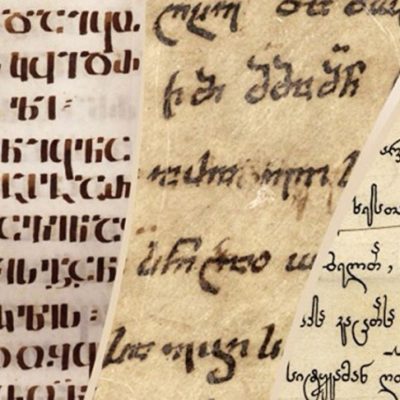
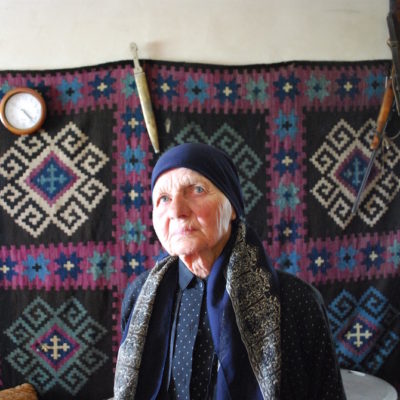
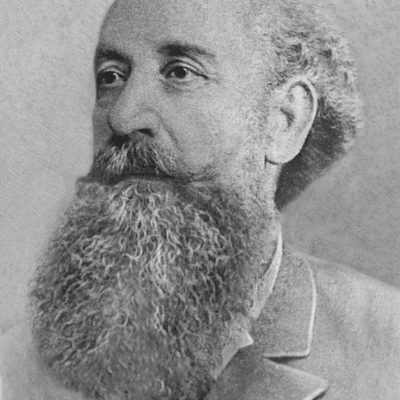

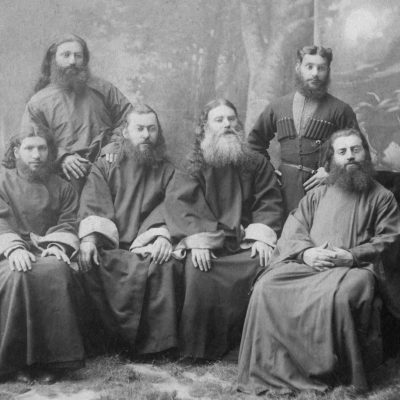
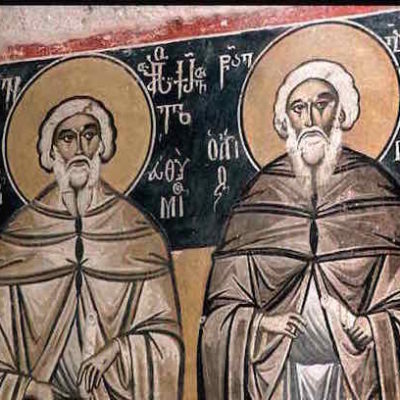
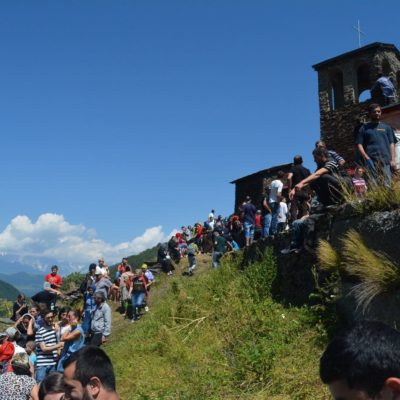
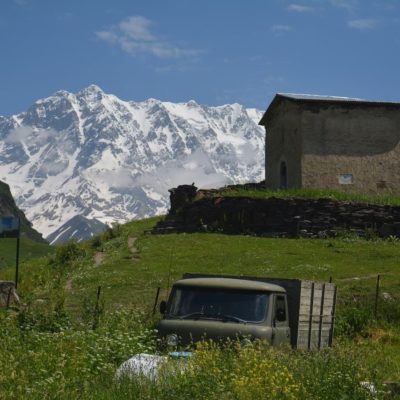
Leave a Reply